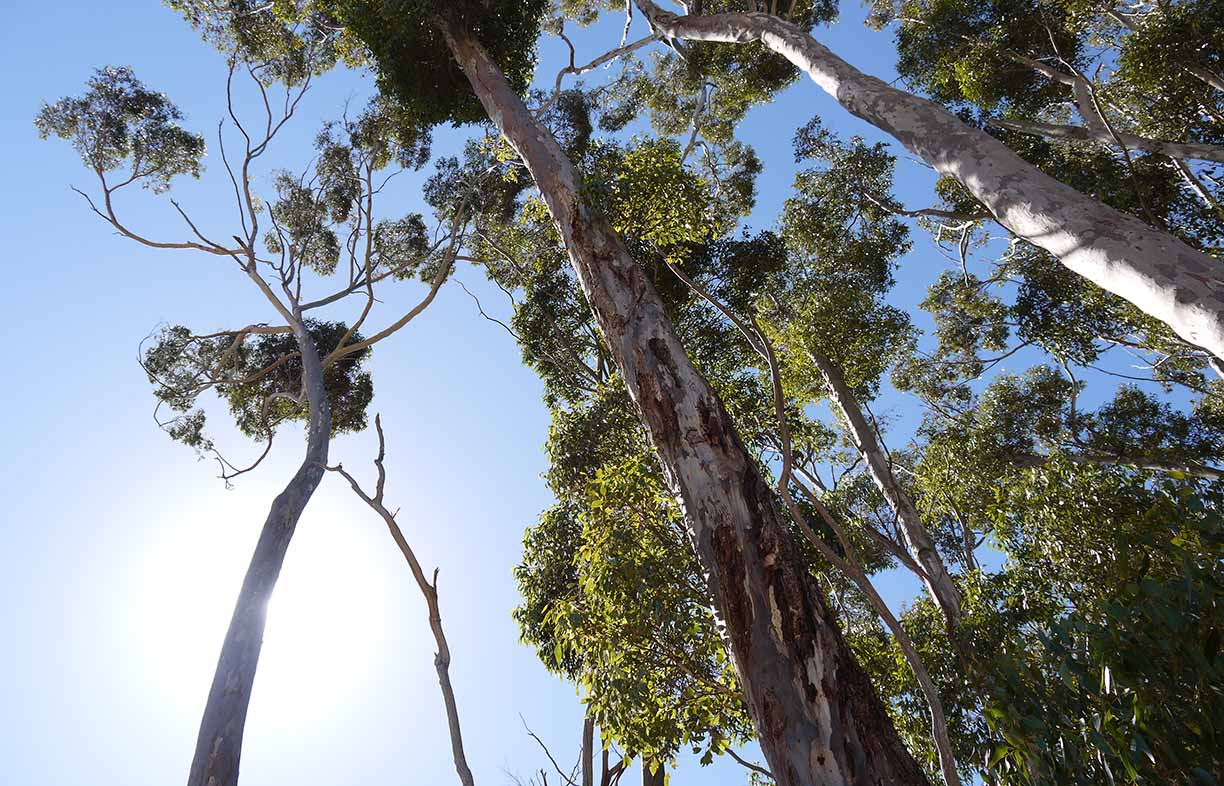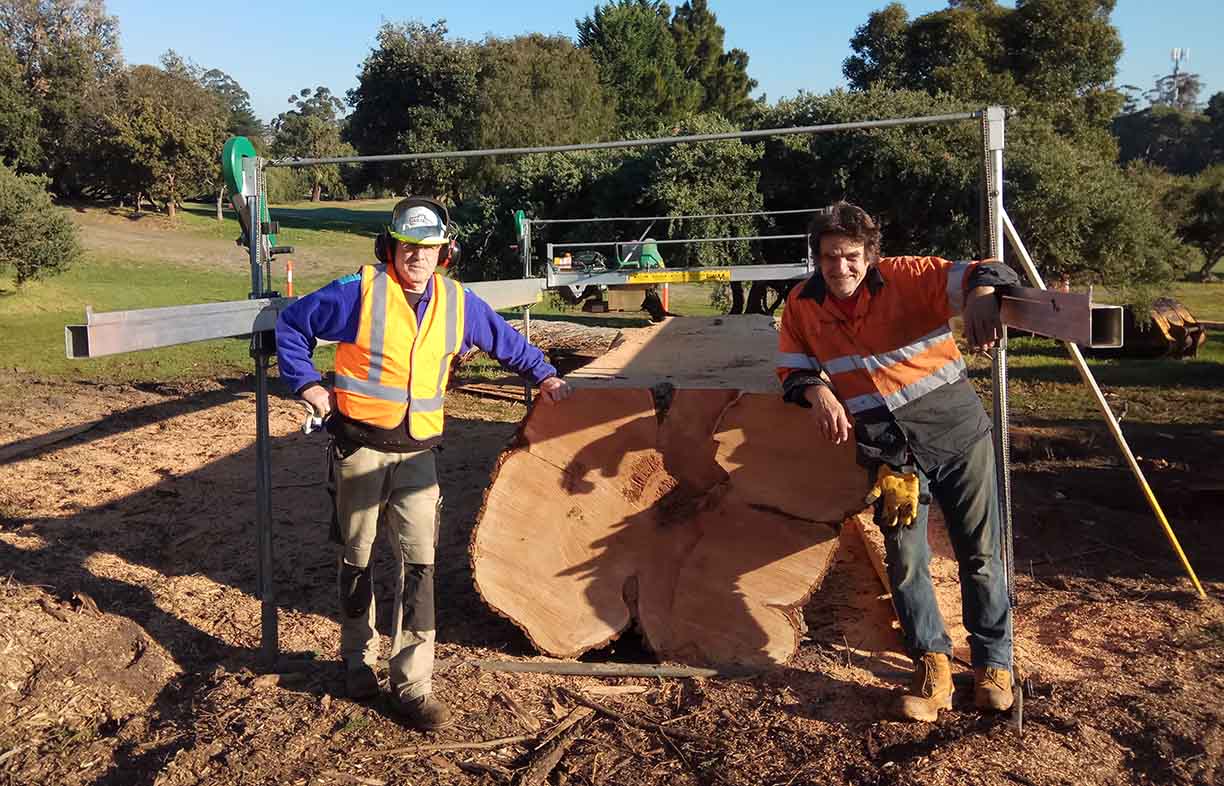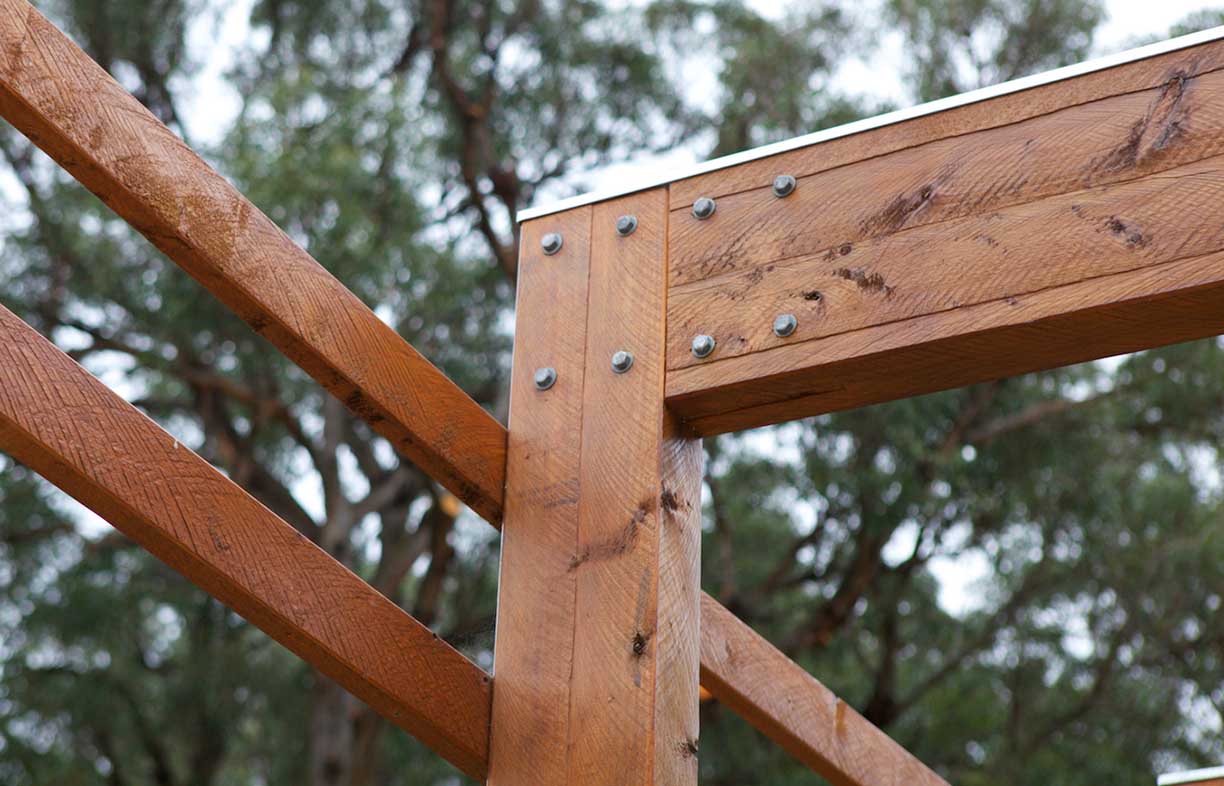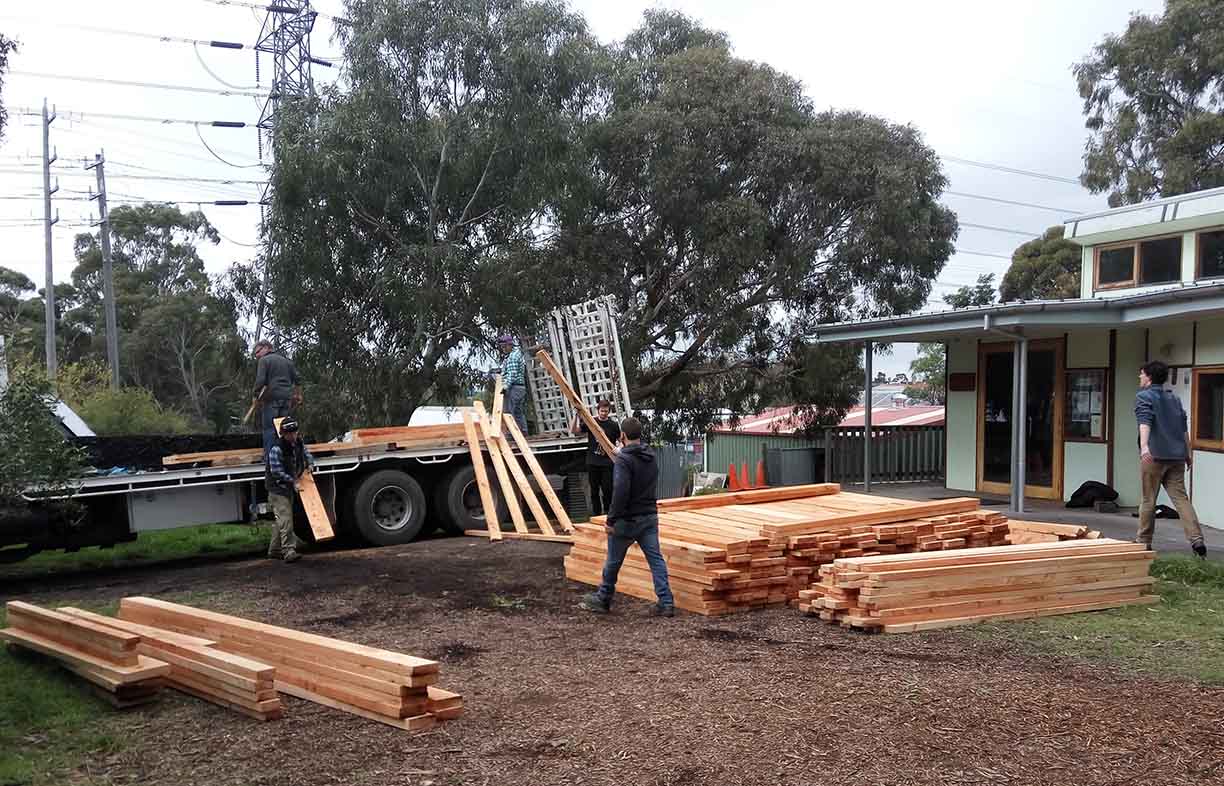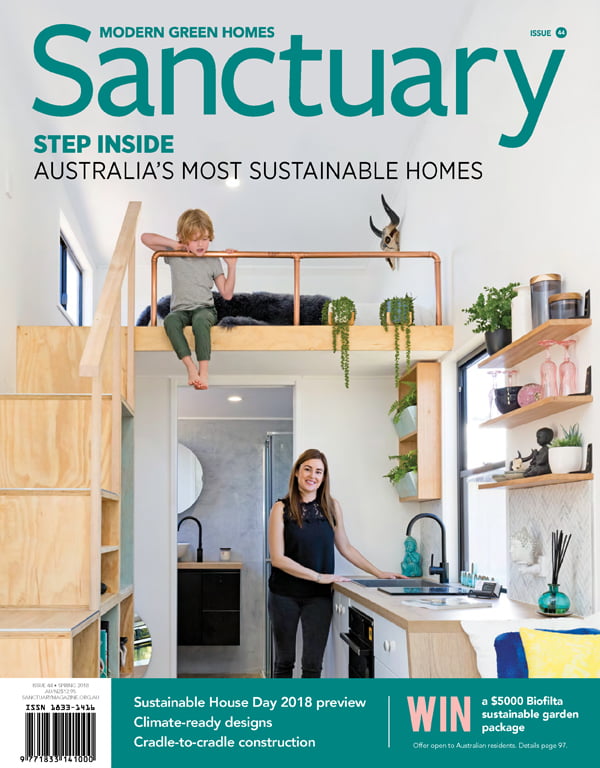Fair dinkum wood: Locally sourced ecologically sustainable timber
CERES Fair Wood has established itself as an honest broker, linking people seeking environmentally and socially responsible timber with small local farm foresters and salvage sawmillers who can struggle to find a market for their resource. While still small in scale, could this social enterprise’s local ‘chain of custody’ approach become a new model for sustainably sourced timber? Sarah Coles gets the low-down.
You might think that the logging of Russia’s old-growth forests and the impending extinction of Siberian tigers has nothing to do with you. But a substantial proportion of timber that is on sale in Australia is still harvested in countries such as Russia, Lithuania, Myanmar and Indonesia.
True, there are sustainable timber certifications available for many timbers produced here and overseas and many projects in Sanctuary specify these. But when questionable timber continues to proliferate through the building industry, and conflicts are ongoing regarding Australian government native timber allocations, there is certainly room for improvement in the way we source and supply sustainable timbers.
Enter architect Paul Haar. Paul and Raphie Kruse are engaged in the Mullum Creek eco-housing development in Donvale, Victoria, where homes are required to be constructed with ecologically responsible materials and have a minimum energy rating of 7.5 Stars. The considerable research they have conducted as part of this project showed that construction and materials represented roughly half of the life-cycle environmental impacts of the homes. “We are focused on materials because that is an impact that’s locked in now and forever,” says Paul.
“As an architect, I’ve long been concerned about the impacts of my timber specifications. Timber, as a material, can be the best building material you can work with, or it can be the worst, depending on where and how it’s sourced.”
Paul explains that slow-growing white Baltic pine (Pinus abies) from cold climate forests of the northern hemisphere have been replacing local plantation-grown radiata pine (Pinus radiata) on Australian building sites at a stunning rate over the past two or so years.
“Baltic pine is on the cusp of being the dominant framing timber in Victoria,” says Paul. “The two timbers are the same price and many builders don’t know which they are using.” He notes that you can detect the difference by looking at the growth rings on the end of timber lengths – on Baltic they are very close (1-3mm apart) whereas on radiata they are more widely spaced (5-10mm).
To tackle this and the many other examples like it, Paul and Raphie have published for the Mullum Creek project the Timber Products Guide to ensure ecologically responsible timbers are selected for construction. It covers all timber applications for residential construction.
While education is one part of the solution, Paul saw that a new approach was needed to better link local timber suppliers with end users. He began encouraging CERES Fair Food to expand its social enterprise model to include a transparent timber supply chain. Fair Food has a local-first approach to sourcing organic produce and its business model involves committing to a fair price, and sticking with its suppliers through all seasons. Paul was regularly in touch with Fair Food’s founder Chris Ennis because, aside from being an architect, Paul is a feijoa grower.
“Three years back, while dropping off his feijoas, Paul said ‘you guys at Fair Food need to do what you do with Fair Food but with wood and small farmers’,” says Chris. “And we were like, ‘you’re crazy, that’s never going to happen’. But over the next couple of years, Paul eased us into meeting local farm foresters and small sawmillers. He slowly boiled us like a frog until all of a sudden we were running a timber business.”
One of those foresters was Rowan Reid. Rowan’s recently released book, Heartwood: The art and science of growing trees for conservation and profit, questions the notion that there are only two sides to the foresty debate: you’re either a treehugger or you’re wielding a chainsaw. He is a proponent of a third option – forestry as farming.
With this perspective, Chris sees parallels between CERES Fair Food and Fair Wood: “It’s very similar – only the plants are a lot bigger,” says Chris. “By buying from Fair Wood you are also going to be helping a farmer take care of their land and create another income stream.”
Fair Wood got up and running in late 2017 and its manager, Pete Smyth, has had a longstanding belief in timber as “a fundamentally sustainable way to do things”. He sees timber as an easily renewed resource as it has a timeframe as short as 25 years from planting a tree to using it as a material. On top of that, he argues, sustainably grown timber can provide habitat and sequester carbon.
Everything Fair Wood is doing rests on transparency. The supply chain can be tracked all the way from small farms to the Fair Wood warehouse on the banks of the Darebin Creek, which, in an interesting twist, is directly opposite a Bunnings timber yard.
And, similar to Fair Food, Fair Wood sources material that’s been purposefully planted on farms for timber production. It’s guided both by what clients request and by what is available from the farm foresters. Its role is to broker the deal. Fair Wood identifies suppliers of Durability Class 1 and 2 outdoor timbers as well as internal joinery timbers. Already, it has good stocks of locally farm-grown sugar gum (Eucalyptus cladocalyx) for decking and landscape applications, as well as Monterey cypress (Cupressus macrocarpa) for cladding and landscape.
The people behind the business are opportunistic about how they source materials from urban and rural salvage sawmillers who, when trees need to be removed, can mill them where they fall. For example, during the week of writing, Pete was offered good quantities of salvaged English oak (Quercus robur) and elm (Ulmus procera), both very saleable timbers with a variety of uses. As a result, in six month’s time they will be stocking kiln-dried elm skirtings, architraves and door jambs as well as oak stair treads.
It’s early days, and while Fair Wood has limited off-the-shelf supplies, Pete envisages an integrated supply line. He’s talking to architects about products being specified with long lead times which will enable them to deliver to each build a range of timber products, sourced with as much environmental and social responsibility as possible. Working this way, it’s likely these orders will influence what, when and how small farm foresters harvest and replant their trees. A key vision for this social enterprise is to keep the story of where a piece of timber comes from attached to the wood from the farm gate to the building site.
Ultimately, this will enable them to support small local farm foresters and salvage sawmillers who may not be able to afford formal certification, but can still offer the market ecologically and socially sustainable timber. As Pete explains: “To expect an architect or builder to be able to invest the time and do that quite significant amount of research and then have all of this contextual knowledge and the contacts to know that they are purchasing sustainable timber, can be a big ask. That’s where we come in.” And like all CERES social enterprises, Fair Wood will be educating interested groups about how to set up similar businesses in their local area.
Fair Wood’s supply area is relatively small, and they’re understandably cautious about growing the business too quickly. Whether you live within or beyond Fair Wood’s supply area, questioning where timber comes from remains critical. “The answer ‘Victoria’ or ‘it’s legal’ doesn’t tell you very much and that is where a lot of the industry is at,” says Pete. Chris suggests people purchasing timber ask themselves a second question: “Who benefited from this?”
Fair Wood supplies the following timber:
- Sugar gum – Eucalyptus cladocalyx
- Spotted gum – Corymbia maculata
- Candlebark – Eucalyptus rubida
- Shining gum – Eucalyptus nitens
- Mountain ash – Eucalyptus regnans
- Messmate – Eucalyptus obliqua
- Monterey cypress – Cypressus macrocarpa
- Radiata pine – Pinus radiata
- CERES Fair Wood
- Rowan Reid, 2017, Heartwood: The art and science of growing trees for conservation and profit
- Mullum Creek Timber Products Guide and information sheets
Related articles
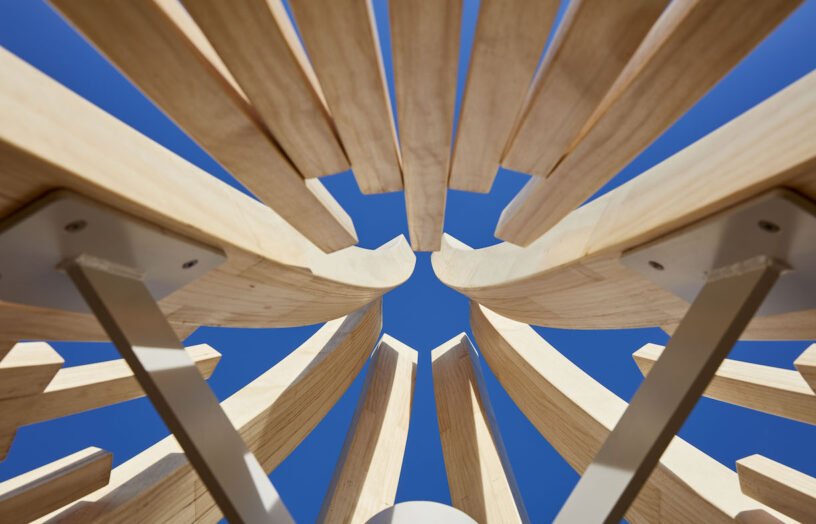 Ideas & Advice
Ideas & Advice
In praise of Accoya
Native hardwoods are beautiful, strong and durable, but we need to wean ourselves off destructive forestry practices. Building designer and recreational woodworker Dick Clarke takes one hardwood alternative for a test run.
Read more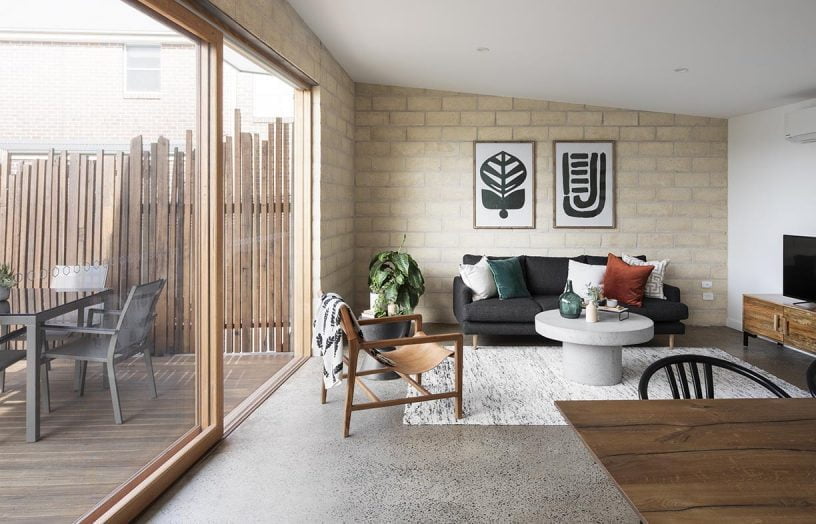 Ideas & Advice
Ideas & Advice
Eco-concrete case studies
Adored for its thermal mass benefits and durability, concrete remains one of the most popular building materials in the world, but its shockingly high embodied carbon footprint cannot be ignored. Luckily, there are now a number of greener alternatives available. Jacinta Cleary examines how they have performed in three different homes.
Read more

